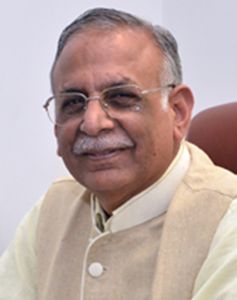Health care emerged as a popular choice in the election manifestos this year. From raising the health care spend to 3 per cent of the GDP, upgrading diagnostic facilities in some 1,50,000 wellness centres to enacting the Right to Healthcare, the promises are many. But we must not forget the many infrastructural battles that India is still fighting. India has one of the worst doctor-to-patient ratio in the world. In fact, India stands at the 145th position on the Healthcare Access and Quality 2018 index, lower than neighbouring Bangladesh and even Sudan and Equatorial Guinea. For electoral promises to show tangible results, the existing health infrastructure demands a holistic facelift.
India needs a robust health infrastructure, which can be achieved only if we strengthen and build capacity within the existing health sector. From more hospitals, doctors and caregivers to a stronger public-private partnership towards building of more medical institutions, the existing medical infrastructure is in a dire need of a revamp in all its aspects—quality, accessibility and affordability.
Last year, the government introduced Ayushman Bharat—the world’s largest insurance scheme—to address access to health care, to improve patient outcomes and reduce out-of-pocket expenditures. But will a corpus of mere 06,400 crore be enough to treat millions, when reports suggest the minimum funds required for successful implementation are close to 01,00,000 crore? Take, for instance, Chhattisgarh. A report by the Comptroller and Auditor General shows that Chhattisgarh performed the worst in terms of medical infrastructure. Between 2012 and 2017, the audit found, “The state suffered from shortages of human resources in critical positions of specialist doctors to the extent of 89 per cent, medical officers by 36 per cent, staff nurses by 34 per cent and paramedics by 12 per cent against their sanctioned strengths. These shortages adversely affected the delivery of health care services by the district hospitals, community health centres and primary health centres.” This is true not just for Chhattisgarh, but also for all the other states.
Also, if the nearest hospital is far away and lacking a full-time doctor, specialist and paramedical staff, essential medicines, medical equipment and has an erratic power supply, the provisions of an insurance cover listed by Ayushman Bharat alone will not benefit an ailing patient.
Moreover, we need to enhance the skill sets of health care professionals for addressing existing and emerging medical conditions. The recruitment policies are outdated. We can learn from the private sector and recruit doctors, nurses and other health staff from colleges in the final year. The career progression needs to be streamlined, like in the Indian Administrative Services.
The Medical Council of India in 2011 mandated doctors to undertake 30 hours of continuing medical education every five years in order to re-register. However, only nine of 26 state medical councils have made re-registration mandatory.
With dramatic transformation of the health care industry, we can expect to shift the course of treatment from reactive to proactive diagnosis and management. Capacity building will help reinvigorate the development of sustainable skills, structures, resources and commitment to improvement in delivery of health care services. We need to move beyond the promises laid out during the electoral campaigns and address the following questions plaguing the growth of the existing medical infrastructure:
● Do the available health functionaries have the required skill sets?
● Do those with required skills have the required equipment, medicines and other supplies?
● Does the work environment facilitate caregivers to deliver high quality services?
All these questions need answers and the only way to address these gaps is through enhancing the state of existing health care infrastructure. While the promise of affordable health care seems like a perfect fit in a country where out-of-pocket health care expenses are pushing close to 64 million lives into poverty each year, the road to accessible health care is a long one. India needs to address the infrastructural gaps before paving the road to affordable health care.
The need of the hour is to provide quality health services, covering even the most remote locations. While the government is the most important player in administration of health services in India, there are gaps that need to be plugged, such as innovation, accountability, monitoring and evaluation and capacity building. Hence, it is imperative to forge partnerships both with the government as well as with private organisations. The PPP model can help enhance capacity of the existing medical institutions, doctors and frontrunners. By means of capacity building, we can scale the reach of health services while focusing on quality and innovation.
Kumar is director, International Institute of Health Management Research.



